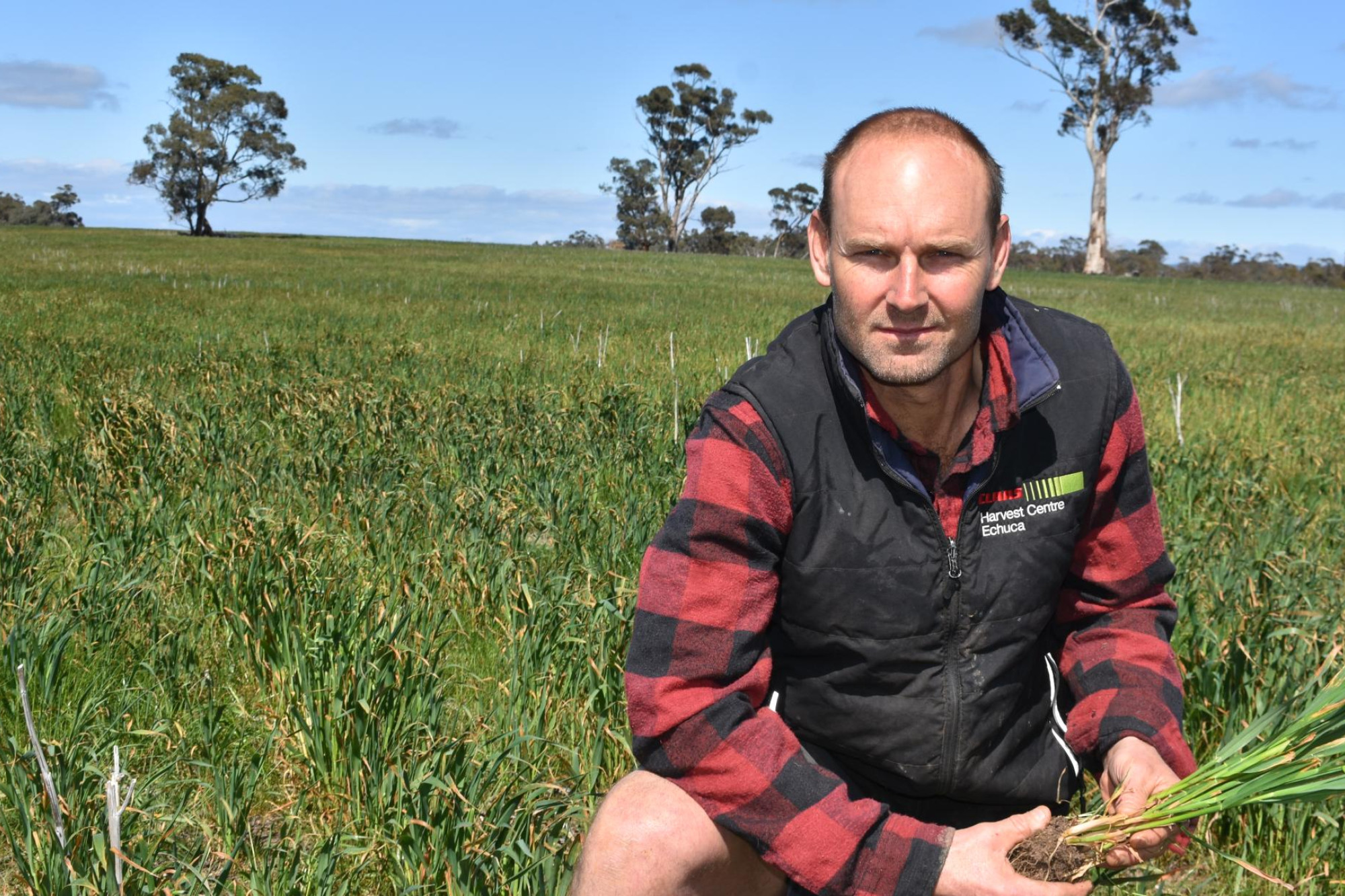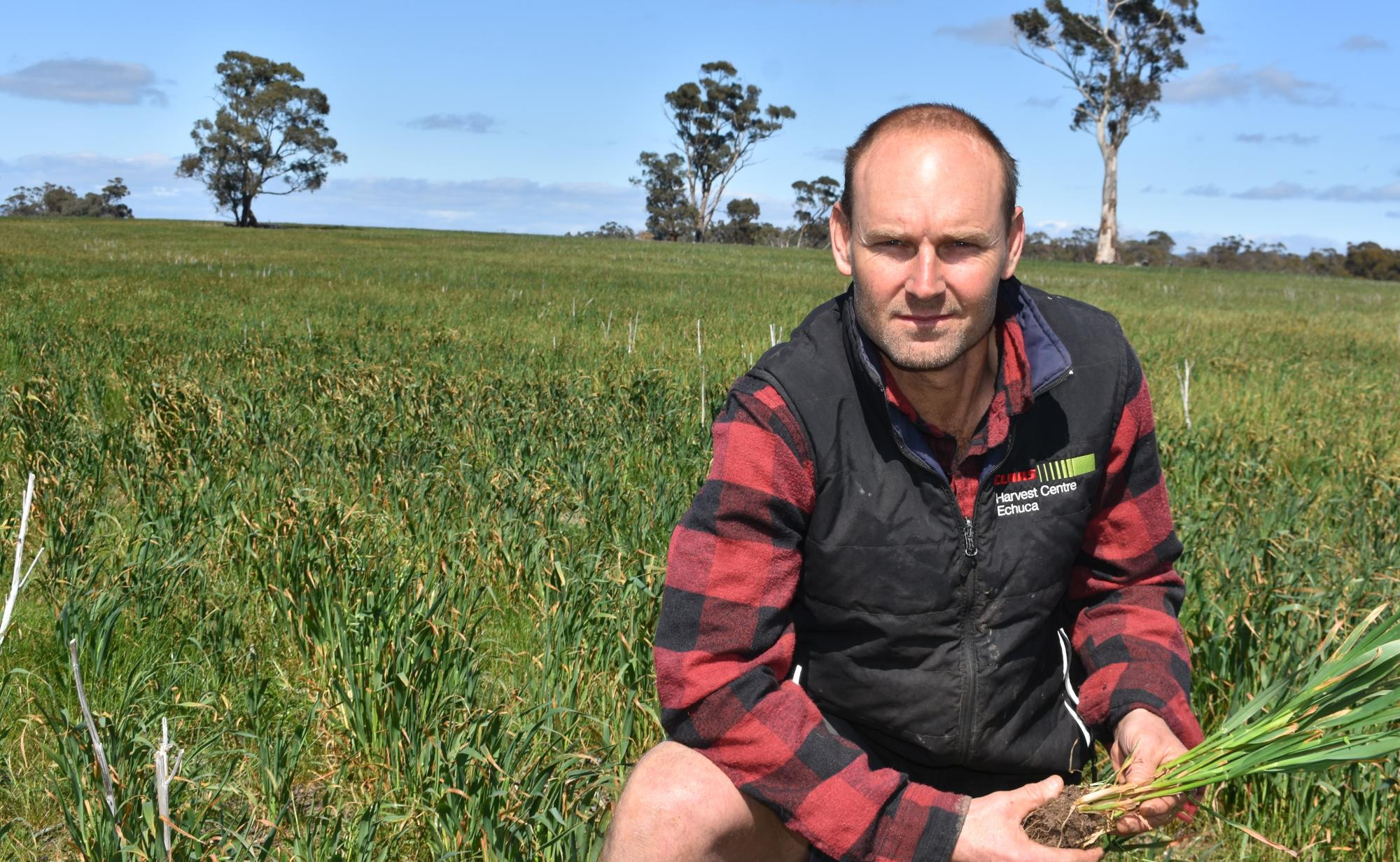Cropping & Soil
2 October, 2024
Wimmera farmers face hard cropping decisions, as 'tap' is turned off
Wimmera farmers say rain is needed urgently, to bring crops home.

It's decision time for farmers in the Wimmera, after the area largely missed out on rain from a system, which crossed the state on Sunday afternoon.
A rain band brought six millimetres to the St Arnaud area on Sunday.
The Bureau of Meteorology (BoM) predicted another rain band forming over WA by Wednesday would follow a similar path across the southern states later in the week.
Luke and Hayley Batters run a cropping and sheep property, Dalyenong, south of St Arnaud, having bought the farm about two years ago.

This year they dry sowed long-season canola and wheat in April, followed by oats in May.
Luke's father Barry has a property on the north side of the town, 35 kilometres away, and the two are run as a partnership.
"Yield and income would be a third of that they were last year at this point in time," Luke Batters said.
Rain was needed in the next week, to turn things around.
"We only received six millimetres, unfortunately, it'll keep the hopes up until the next 5mm, but in the bigger picture it's still a depressing outlook for growers," Mr Batters said.
"I guess that's farming, it's hard to match the Bureau (of Meteorology's) predictions with reality.
"It just reinforces the idea of farming for an average year, each year."
He said the area needed 25-50mm to "get us out of trouble
They said they're now at a point of whether they'll allow cereal crops and canola to run through, cut it for hay or use it for grazing.
Mr Batters said the second property allowed for diversity, in the partnership
He said he was running 1500-1800 Merinos ewes, joined to Suffolk rams, to turn off prime lambs over the hooks or into the yards.
He said it was a totally different soil type from the north of the town to the south.
"That has created a challenge, with how it behaves with the season - it's sand over clay here, where north of town it's initially clay loam and then it turns into self-mulching clay.'
"The season starts earlier here, and there should be slightly more rainfall, but the sand allows things to get going quickly, but - at the same time - it finishes earlier."
He said it rained in the first week of April and "crops bounced out of the ground and looked fantastic, then we had nothing for seven weeks".
"In that time, those couple of crops we sowed tried to die," he said.
"The season has been really leading us along, things have looked good, albeit they were slower than they should have been - obviously in the past five weeks, the tap's just turned off."
Moisture probes were showing deep reserves, below 40 centimetres, "but the roots aren't in it."
The lack of rain had also affected pastures, he said.
Luke's father Barry estimated he'd be getting yields of 50 per cent of an average year.
"If it rains, they will recover quite a lot - but we are getting to the point where the rain has to happen in the next week," he said.
"The canola is dropping its flowers and I would say we are looking at half an average year, at best."
He said the "season was running out" but farmers had been very fortunate there had been no hot weather.
"We can get 30 degrees, right through September - in some areas there has been a lot of frost and enormous damage," he said.
He said on the northern block, he was growing wheat, barley, canola, lentils, export oats and vetch hay.
Most of the sheep were run on the southern block - "the price is very poor, at the moment, and people are saying they have to feed them, and it's not worth it."
"All in all, it's a bit tough."
Long-range weather forecasts have predicted late rain, across much of Australia.
Nick Petrie, St Arnaud said his property needed 30mm of rain and the potential for the season was slipping away.
He only received six mm on the weekend.
"We got enough to let us tick away and keep on going, but we never really got the rain," he said.
He was growing export oaten hay, barley, canola and wheat.
"We are right on a knife's edge, depending on whether we cut a lot of cereal crops for hay, or let them run - because we don't know what the hay job is doing, elsewhere, with all the frost damage that's around," he said.
He was hoping to get 10mm of rain a week ago, "but it never happened".
"We will strip some crops that will only be two or three bags to the acre, but there is not enough there to worry about cutting but what oats we can cut for export hay we will cut."
Mr Petrie estimated he'd get yields of three to three and a half tonnes a hectare of oaten hay.